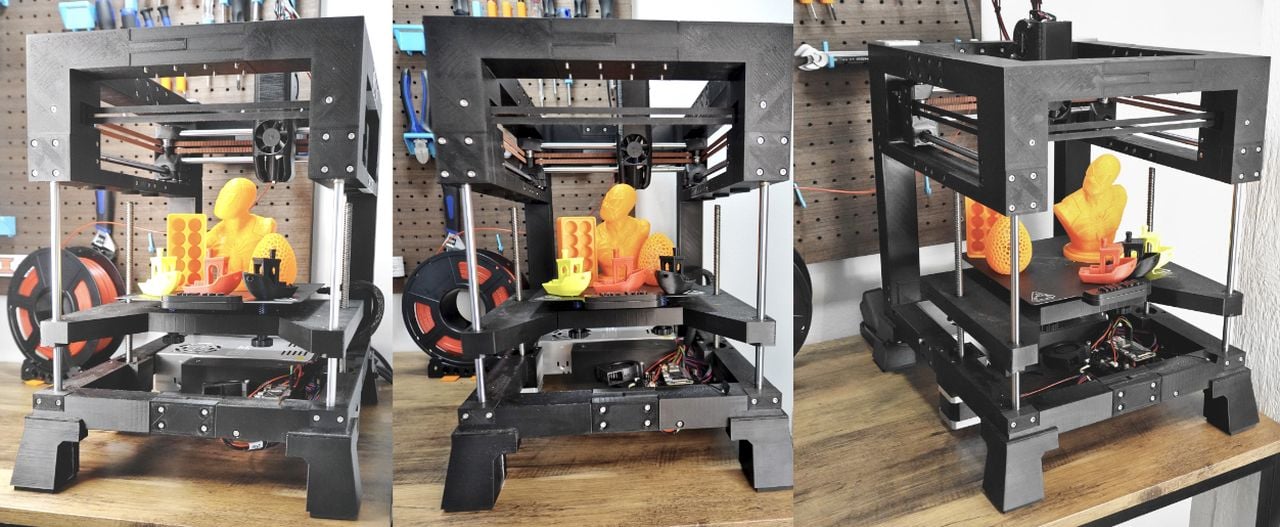
Matthäus Szturc has officially released the design for The 100, an incredibly fast DIY 3D printer.
Szturc (a.k.a. Matt the Printing Nerd) has been developing an experimental open source 3D printer design called “The 100” for about a year now.
When we last wrote on The 100 back in March, we saw a machine concept unlike any other FFF 3D printer: it attacked the problem of vibration in a unique approach that actually worked. The vibration was corralled by a “center of gravity” design that allows the machine to run substantially faster than typical 3D printers.
One of the unique features of The 100 was that it used an entirely 3D printed frame. This is quite contrary to conventional wisdom that insists the frame should be as rigid as possible to counteract vibration generated at high print speeds.
Now, months later, Szturc has provided the first official open source release of The 100’s design. He writes:
“Today after another 6 months of development we are proud to announce version 1.1 of our THE 100 3d Printer. Many things have changed. Our printer is now one of the 5 fastest printers in the world that competed in the #speedboatrace with an astonishing time of 03:03min. It printed the Speedboat with an acceleration 160.000mm/s² at a speed of 860mm/s.”
What’s happened over the past few months? It seems that the design has been refined with two specific areas.
First, the new design has tweaked the 3D printed frame. The idea is to deliberately channel excess vibration into the frame, which wobbles seemingly uncontrollably in live videos. However, Szturc explains that PLA, unlike aluminum metal, has more predictably vibratory performance. This can then be used to compensate for the vibration. I don’t believe there is any other 3D printer design that does this.
Szturc said the new frame offers far greater performance:
“We changed the construction to a full connection of PLA between the Top and the Bottom Frame part that helps to. Also we developed new Feet that help absorb the shock that was created by the vibration of the printer. Overall the new Construction is able to handle 50% higher accelerations and 30% higher speeds.”
Secondly, the toolhead has been redesigned with a new effort to improve cooling. Cooling is critical on high speed printing because each layer must be completely frozen before a second layer can be attempted.
With advanced air flow simulations, Szturc was able to identify that the previous air ducting design was partially cancelling out the airflow. The new design, certified again with simulations, is able to provide vastly greater cooling power — 65% more. Incredibly, the new cooling design allows for printing overhangs at up to 75 degrees at speeds between 220-250mm/s!
Both of these have enabled faster print speeds and more reliable 3D printing.
This video shows the new features in action:
The design files are open source, and have been published on Printables for anyone to download and use. Amazingly, the estimated bill of materials cost for The 100 is about US$300, far less than some high speed printers. However, you’re in for 20 hours of building and another 10 hours of calibration before the machine is ready for use. Fortunately, Szturc has developed a series of easy-to-follow instructional guides that will help most folks get through the build process.
The 100 is a fascinating project that just could be the fastest 3D printer you can buy, and it won’t cost that much, either.
Via Printables and Patreon
